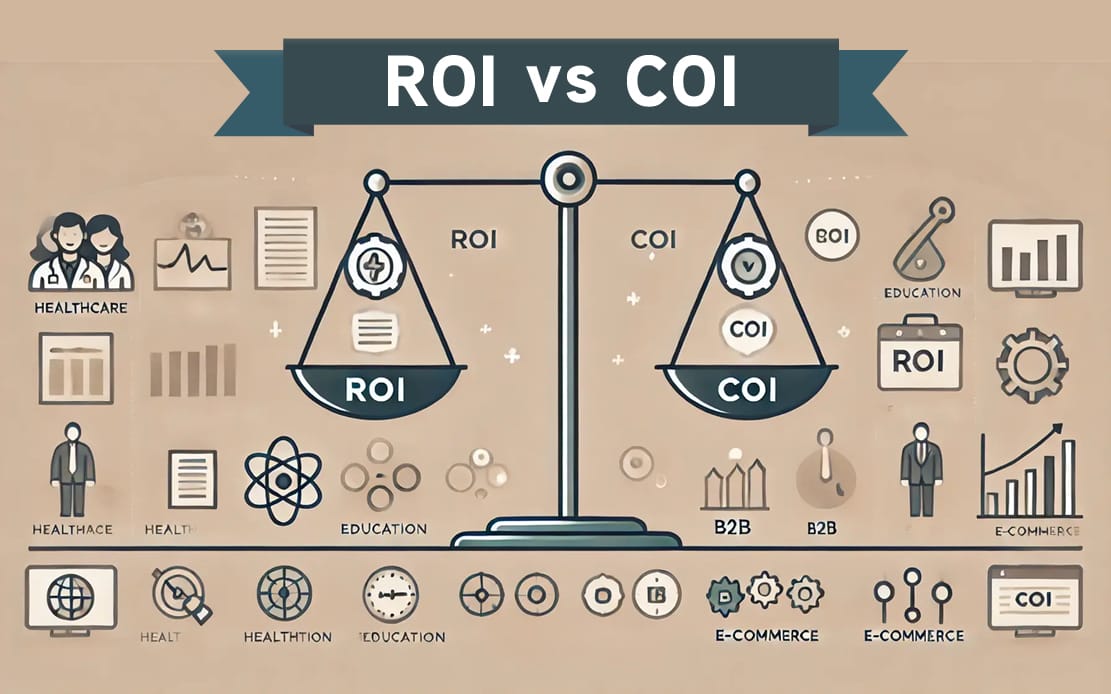COI vs ROI

In the business world, there is one word that all managers frequently mention: ROI. "What is the ROI of this feature?" / "What about the ROI of this project?" But what about the COI, much less known but just as important, if not more so?
What is ROI?
ROI (Return on Investment) is a financial metric used to evaluate the effectiveness or profitability of an investment. It is typically calculated as a percentage and represents the ratio between the net gain generated by an investment and its initial cost.
ROI is particularly useful because it provides a clear picture of the financial profitability of a project. The higher the percentage, the more efficient the investment is considered to be. Companies use ROI to compare different projects or investments and prioritize the ones that seem the most lucrative.
What is COI?
COI (Cost of Investment Opportunity), or Opportunity Cost, is a different concept. It measures the potential loss resulting from choosing one investment over another. In other words, it is the benefit that could have been achieved had the resources been invested elsewhere.
COI is based on the idea that every decision has an implicit cost: the value of the alternatives not chosen. For example, if a company chooses to invest in a project that generates a 5% ROI, while at the same time another project could have generated a 10% ROI, the COI is 5% (the difference between 10% and 5%).
What’s the Difference Between ROI and COI?
Although these two indicators are closely related to decision-making, they differ in several key areas:
- Scope:
- ROI focuses on the direct financial outcomes of a specific investment.
- COI, on the other hand, considers what has been sacrificed by not choosing other available options.
- Purpose:
- ROI helps to measure the performance of an investment after it has been made.
- COI evaluates what a company could have gained had it made a different choice, thus anticipating potential future losses due to decisions made in the present.
- Decision-Making:
- ROI is often used to justify or evaluate an investment after it’s been made.
- COI, although it cannot be calculated as precisely as ROI, is used to compare decisions before they are made, encouraging the consideration of alternatives.
COI: Sometimes a More Important and Challenging Metric?
- A Holistic View of Decisions
- ROI, although essential, often provides a limited view of a project. It doesn’t take into account alternatives or lost opportunities due to the choice made. COI, however, offers a more comprehensive perspective by incorporating the indirect consequences of each decision. In an environment where resources (financial, human, time) are limited, ignoring COI can lead to suboptimal decisions.
- Complexity of Evaluation
- Unlike ROI, which relies on precise numerical data (observed costs and gains), COI is much more difficult to quantify. It depends on projections, assumptions, and scenarios. This makes it even more challenging to use, as it forces one to anticipate alternative scenarios that may never occur and to assess probabilities and hypothetical benefits. This uncertainty makes COI tricky to handle, but its utility is immense in uncertain or rapidly changing environments.
- Resource Prioritization
- COI forces decision-makers to consider the strategic management of resources. A poor choice can lock valuable resources (capital, time, workforce) into low-return projects, thereby preventing more lucrative investments. This approach is especially relevant for businesses that often have to choose between multiple projects with uncertain outcomes.
- Long-Term Anticipation
- While ROI may have a short-term focus (maximizing immediate benefits), COI encourages longer-term thinking. Some decisions that appear profitable in the short term may carry a high opportunity cost in the long run, especially if they block future growth opportunities. COI, therefore, invites a more strategic evaluation of decisions, beyond just immediate benefits.
Conclusion
ROI and COI are complementary indicators in decision-making. ROI provides a direct assessment of the profitability of an investment, while COI measures the alternatives that were sacrificed. Although ROI is often favored due to its simplicity and clarity, COI is sometimes a more crucial metric, especially in complex environments where opportunities are numerous and resources are limited. However, the difficulty in quantifying COI means it is a more challenging tool to use, but it is indispensable for truly strategic decisions.
